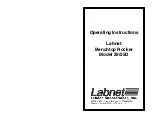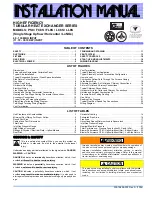Reviews:
No comments
Related manuals for Klee Sequencer

AP300
Brand: Qingdao H.Y Pages: 6

25
Brand: Labnet Pages: 5

Toolbox
Brand: 1010music Pages: 2

Blackbox
Brand: 1010music Pages: 4

Litmann Quality 3100
Brand: 3M Pages: 2

CEFL PIR
Brand: DANLERS Pages: 2

ST
Brand: Haas Automation Pages: 26

PS8
Brand: Unitary products group Pages: 28

HERA
Brand: RayLight Pages: 34

GAZELLE FREESTYLE
Brand: Gazelle Pages: 10

ECLIPSE
Brand: Latham Pages: 19

SC 2 Deluxe EasyFix
Brand: Kärcher Pages: 12

KM 70/15 C
Brand: Kärcher Pages: 16

EQ231G
Brand: LA Audio Pages: 9

PG Series
Brand: Oakworks Medical Pages: 28

RTC1000
Brand: R&S Pages: 371

06206
Brand: R.M. Young Pages: 9

IS-240
Brand: quadient Pages: 188

















